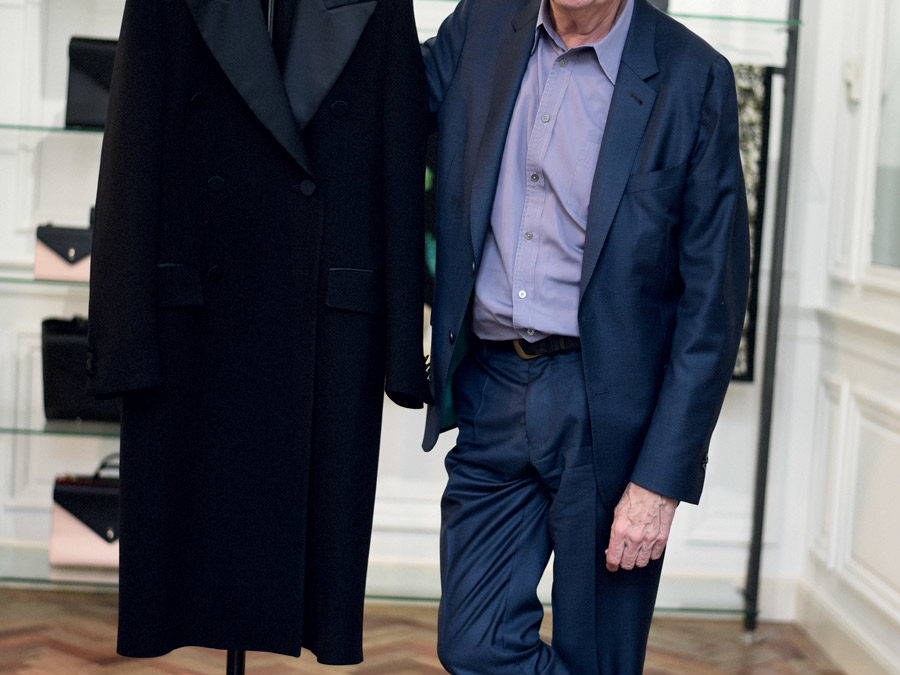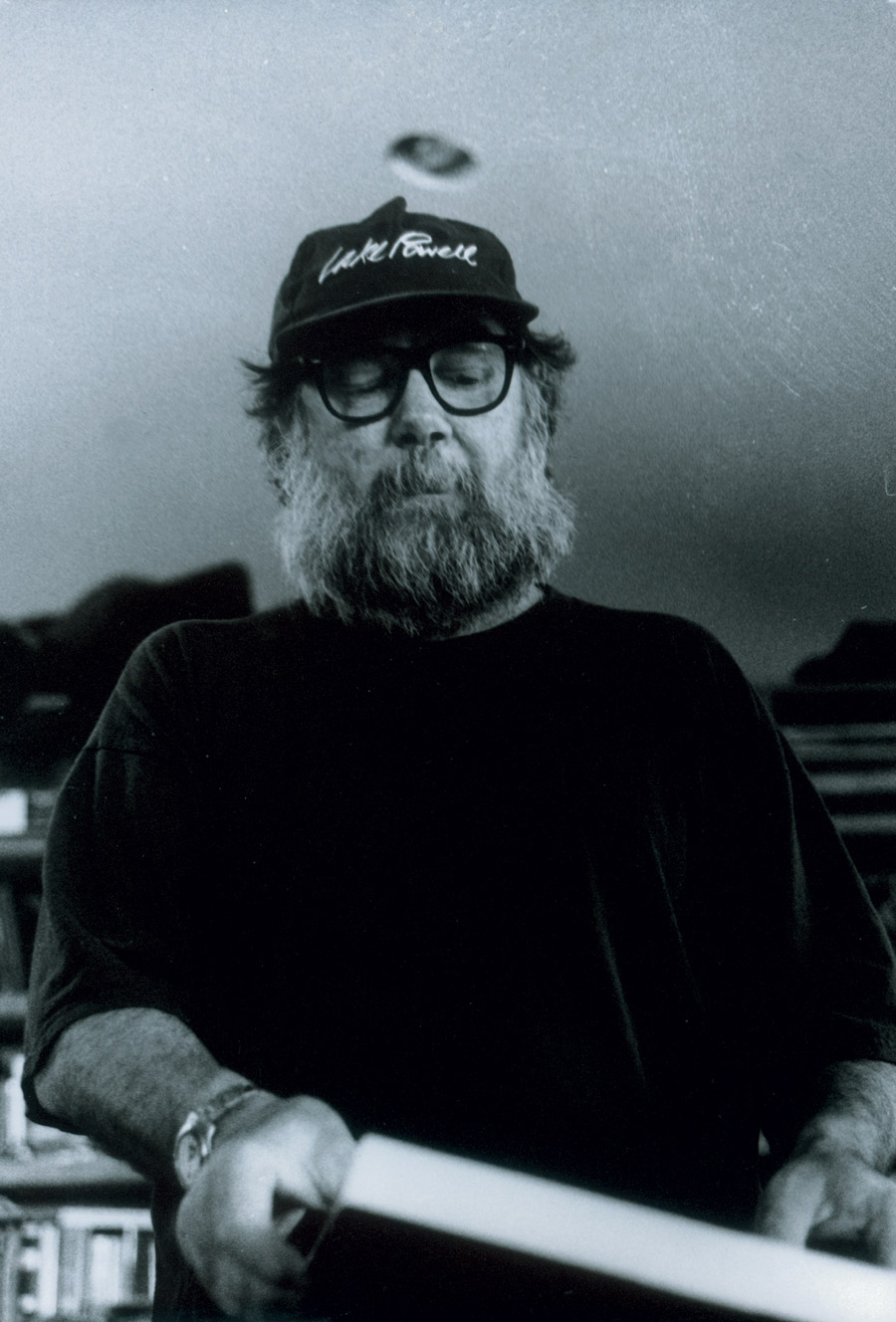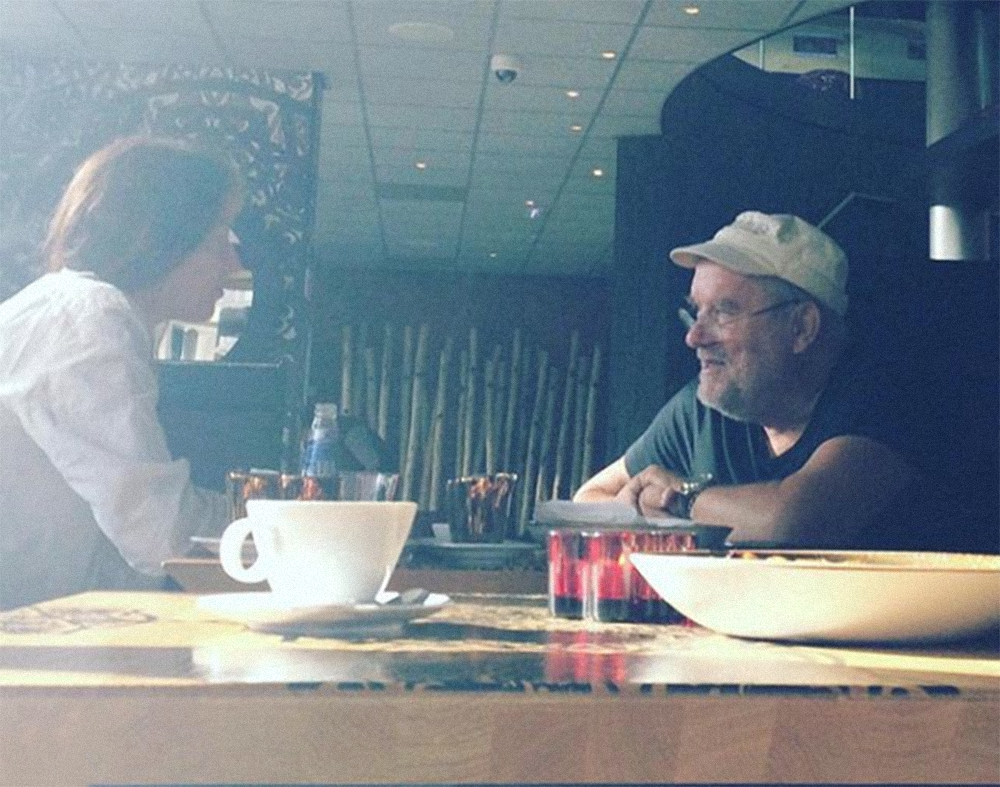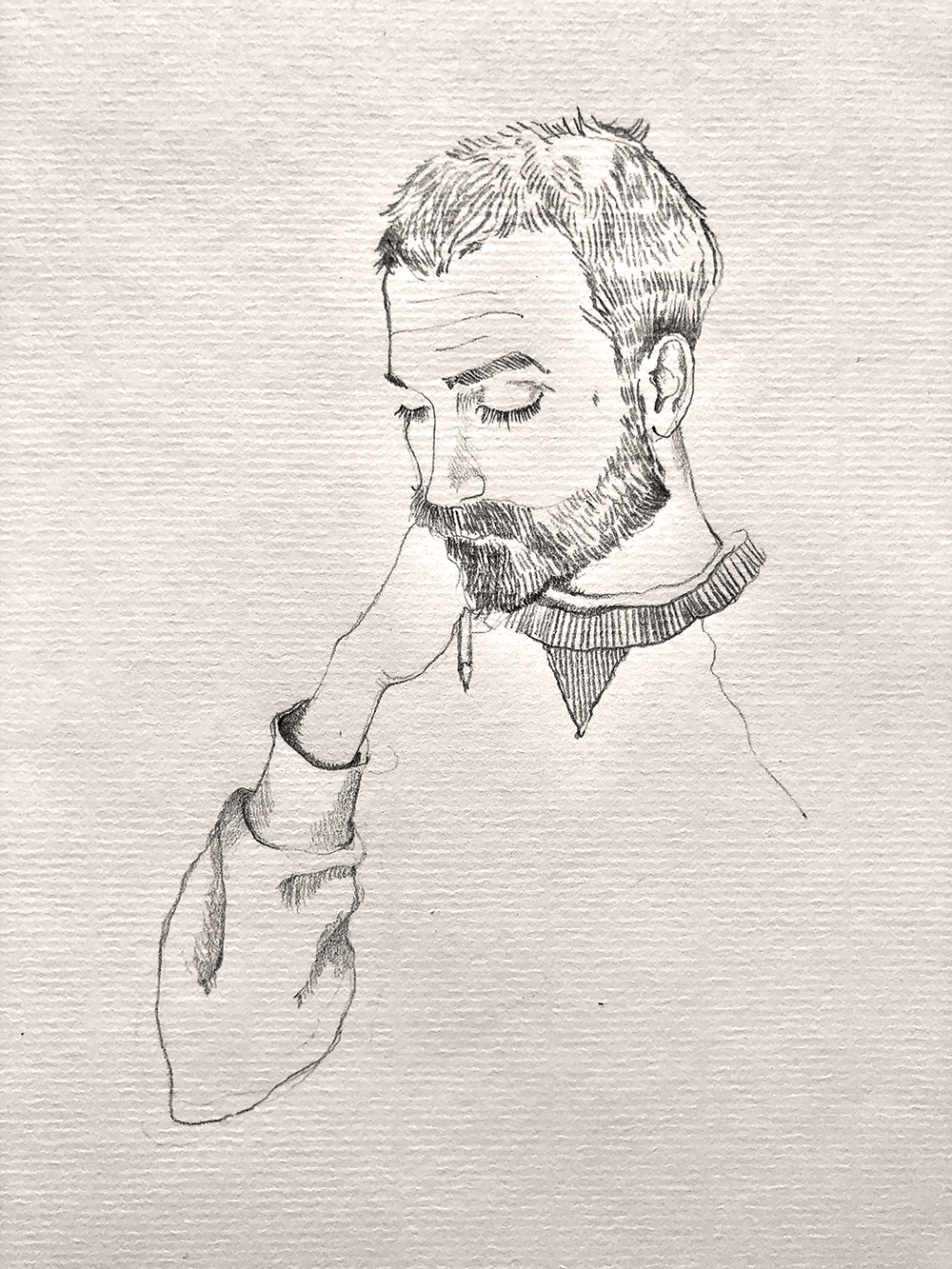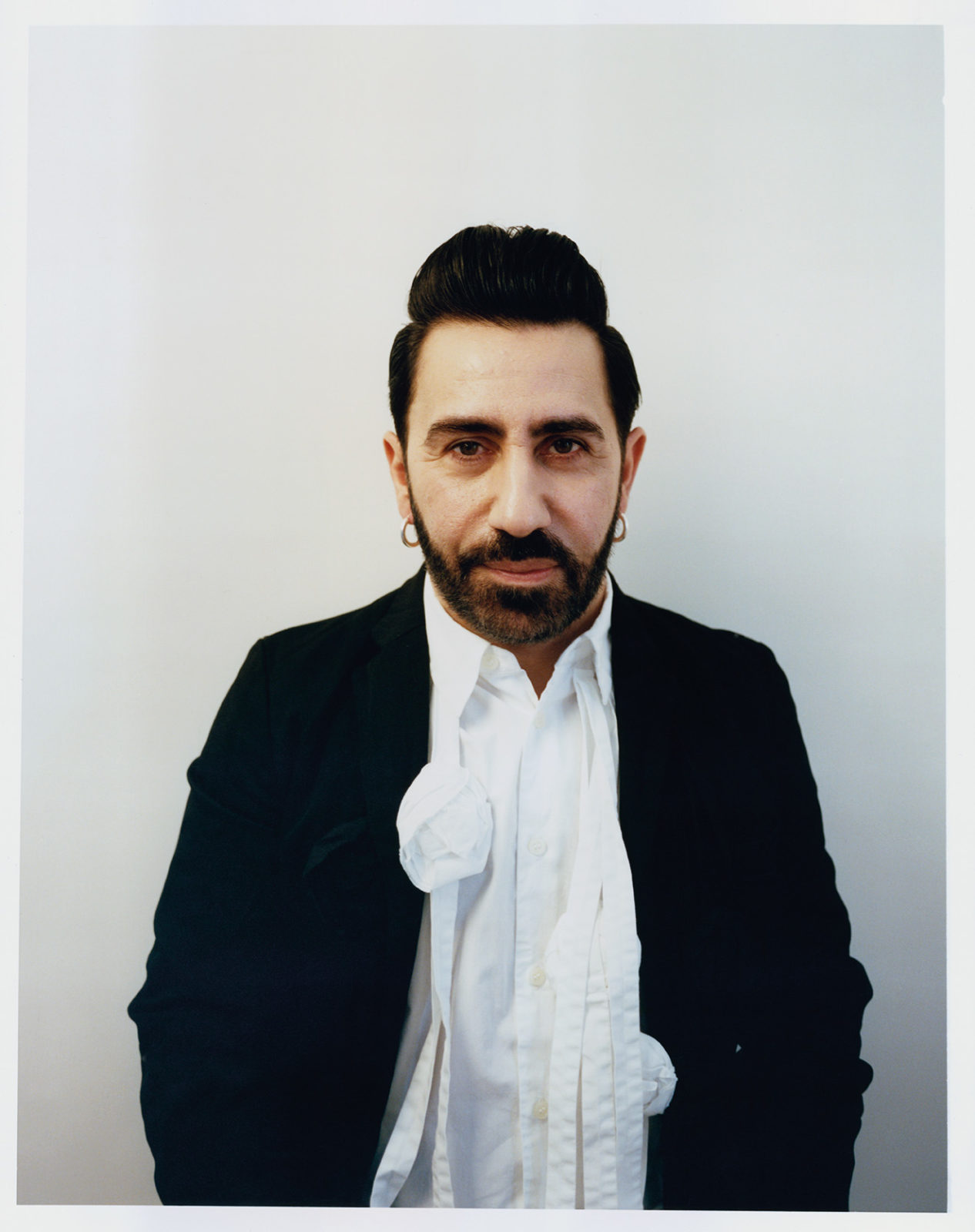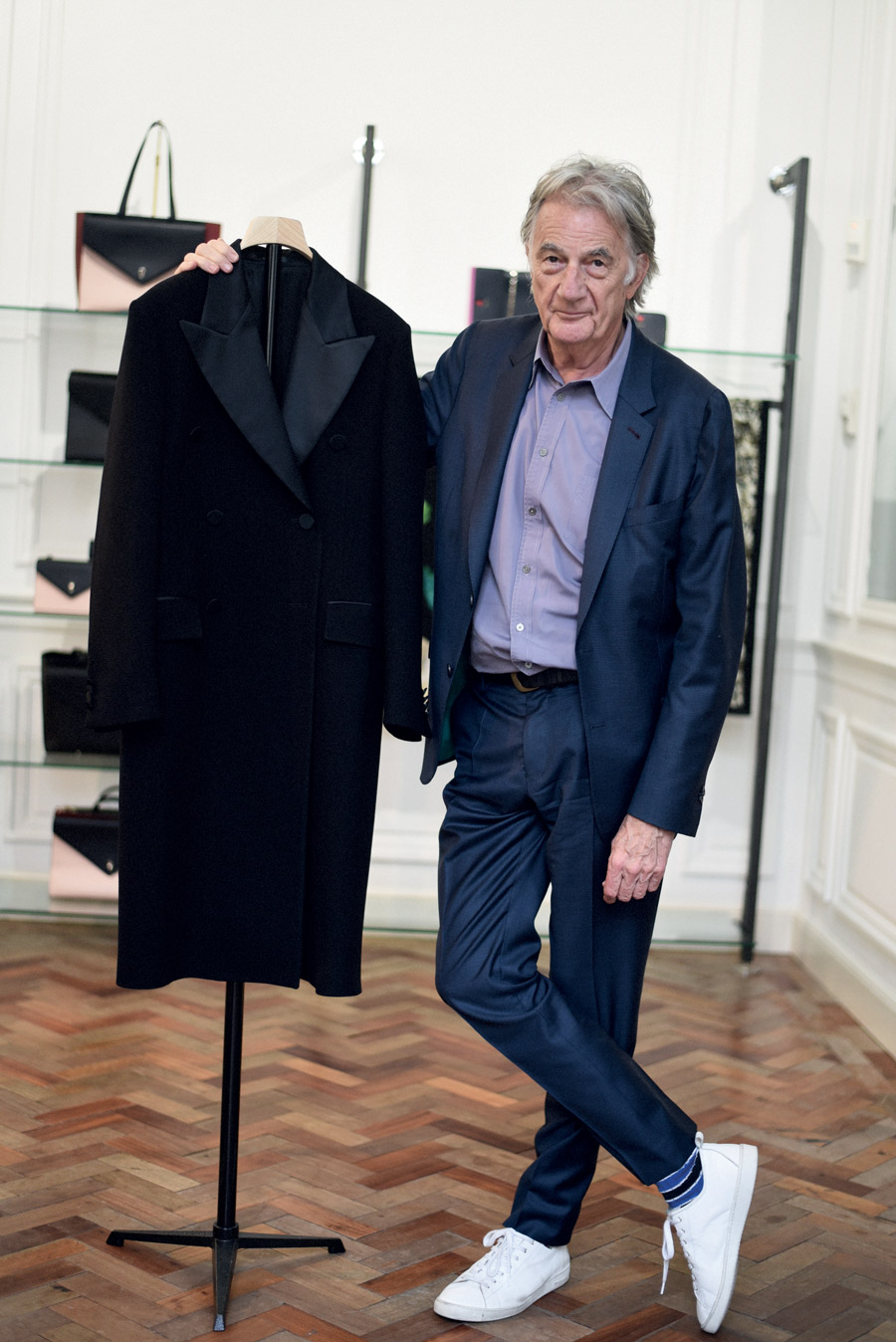
A MEETING BETWEEN PAUL SMITH & ARMELLE LETURCQ
By Armelle Leturcq
Fashion’s rare bird, Paul Smith got his start on Savile Row in the 1960s, where he learned the business by working with the leading tailors. He followed this up by creating his eponymous fashion house in 1970, spending the first twenty years designing clothes exclusively for men. However, the British designer eventually noticed women coming into his stores to purchase men’s pieces in small sizes. That realization kicked off the Paul Smith revolution, which put forth a more liberated, androgynous silhouette for the modern woman. As the brand prepares to launch a line of women’s tuxedos, he spoke with Crash about the milestones in his career and what drives him today.
Since the beginnings of Paul Smith, the fashion world has completely shifted.
Yes, and we are still luckily do well and stay independent. My little company is going to be so unique soon. We don’t work with celebrities, we’re still independent. The fashion wheel rolls around and it’s interesting to imagine where we’ll all end up. Everybody is all about the logos today. It’s the monogram mania, celebrity association mania, being part of a big group mania. We don’t rent this building, we own it. We also own the ones in Milan and New York. It’s quite interesting as a company to keep our feet on the ground. For me, it’s a lovely job. I don’t do it to earn money, I do it because it’s enjoyable and I get to meet interesting people.
People in fashion often forget what their job really is about.
I always say: “it’s only fashion”. Of course, it employs lots of people, it creates wealth but it’s not heart surgery. The unsung heroes are the people working in warzones, doctors, nurses, volunteers. Now politicians and human beings seem to be confused about why we are alive. It seems that we are all here to produce something to do with wealth rather than creating friendship and happiness. Years ago, politicians were more sympathetic towards creativity, schooling and family values, but now it’s all about power and economy.
Fashion is obsessed with all things digital.
Yes, everything happens on social media nowadays. With teenagers, it’s very difficult. They’re obsessed with Facebook and Twitter and are sometimes horrible to each other on these platforms.
The new generations are aware of these dangers and want to protect their privacy.
My wife and I have no email address; we don’t have a computer at home. My wife doesn’t have a cellphone.
Why did you want to create this Tuxedo capsule collection?
I’ve always had tailored clothes in my collection and I’ve always had one tuxedo. In this world of so many diverse pieces of fashion with an emphasis on expensive sportswear, my history is tailored clothes. Without being strong-headed, that’s what I’m good at. I won’t bore you but the construction of this, the way it’s made inside is really traditional. If your body doesn’t change, you could wear this for twenty years…When I was in my twenties, I had the privilege of going to a lot of couture shows in Paris. I used to get tickets from La Chambre Syndicale. I saw Chanel, Saint-Laurent, Balenciaga – when they were still a traditional couture house. I went to Saint-Laurent when he showed the first Smoking in the late 1960s. There were only sixteen people in the audience. They used to have one or two shows a day for two weeks. There was no music and the models were holding a number. Often you would have nuns with young girls in the audience to show them a career path they could follow. There would be maybe one pop star, one or two socialites from New York. It was so amazing to see the first trouser suit on the runway. That has always been in the back of my mind. Before I started making clothes for women, Grace Coddington used to use so many Paul Smith men’s clothes on Linda Evangelista shot by Demarchelier or Bruce Webber. On the first collection I made, there were no dresses nor skirts, it was all tailoring or knitwear. The first presentation I ever did was in my showroom at Rue du Bac and had only boy’s clothes. In fact, for now it would probably be perfect because it was just long knitwear, traditional loafer shoes…
You were the first to do these kinds of clothes and bring that fluidity between men and women.
Yes, it has become such an important subject today, but I always did it. In a way, it was people like Grace Coddington, Franca Sozzani and the stylists at the time who understood that aesthetic. Of course, I like the way women look, but I’m more interested in the conversation and the interest that a boy or a girl has. My wife is always dressed in quite a simple way.
It’s easier for a man to be elegant. You just need to change the color of your suit every morning. A Smoking is perfect for a woman because it takes you from day to night.
Yes, it’s perfect for a modern girl. That’s why I chose the barathea fabric. It’s all wool, but it’s the way it’s constructed that gives it this life. Barathea was always used for military uniforms. If you’re working as a soldier, you need to look immaculate. It’s a really fantastic fabric, it doesn’t crease.
Which season is this?
It’s Spring 2019, but it’s out in November. Seasons now… I sit down with my designers and I ask them what collection it is. They say it’s for Spring and that it will be delivered in November. (laughs) It’s the same for Winter which is delivered in May. It’s just ridiculous. There are so many crazy things happening in fashion.
People travel everywhere, so seasons aren’t set in stone.
Now we have to do a lot more medium weight fabrics. The delightfully clever Azzedine Alaia’s deliveries were always so late that if he had kept going a little bit longer, he would have been on time. (laughs) He did his own thing and I love that.
He didn’t care about the system.
He was privileged to be able to do that. Unfortunately, no one else is in the position to do that. The owners of Alaia respected his way and were willing to do it.
What do you think of the new role of the artistic director?
Most designers are not really designing anymore, they’re just stylists. That’s really interesting. Several of them have never learned about design, they just have a good eye. So many aspects of the industry are changing. You can choose to not care or think it’s sad. To be honest, I don’t really have an opinion on it. It is what it is.
Do you feel like your personal work experience has changed?
When I started, designers didn’t really pay attention to what anybody was doing. Obviously there wasn’t any social media back then. The information you had came from only a few newspapers. The Times newspaper would come and write about it, but it was about clothes you didn’t see for another six months anyway. When you were designing, you were doing it from your head and your heart, not thinking about what was on trend or not. At the beginning, Paul Smith was only for men, quintessentially British and I was the one who coined the phrase “Classic with a Twist”. There were very few fabrics available then. You couldn’t buy technical fabrics. People used to climb Mount Everest in wool. In order to keep warm, they just wore more clothes. In 1976, I showed a collection in a little hotel at Place de l’Odéon, in a small bedroom. That’s where I was sleeping actually. I put the clothes in the bathroom and laid out shirts, jackets and knitwear on the bed. Nobody came. (laughs) I waited four days and on the last day at five o’clock, my first client arrived. That’s where it all started. Then I did another presentation in a hotel and finally organized my first fashion show at a friend’s apartment on Rue de Vaugirard. I used friends to model, music from a cassette and it was charming. If only you could do that kind of stuff today, it would be so special. Before, there were only two collections per year and one fabric fair in Frankfurt, Germany. I used to go there with Thierry Mugler, Claude Montana and Chantal Thomass. We were the scared young designers in the middle of German businessmen.
Were you very connected to Paris?
Yes. Very kindly I was a given the Légion d’Honneur. I’ve been very loyal to Paris during my entire career. At the time, this city had something very special, it was before globalization. Today cities all look alike. The reason I chose to put my store in the Raspail area is because there are no fashion shops there. I did the same in New York where I picked a street which only has a launderette and an Indian restaurant. Then in London, I opened my house in Notting Hill. My first shop in Japan was opened in 1982. It was in Kotto Dori, which means Antique street. I’ve always been attracted to streets that aren’t too obvious.
What is your relationship to photography?
My father used to be an amateur photographer and started a Camera Club in the town where I’m from. At the age of eleven, I was given a small camera. We used film back then so I was working in the dark room, developing with chemicals. From about age twenty-one, I started my first little shop that was only open on Friday and Saturday. The rest of the week I did many jobs like freelance designing and photography. I took pictures for Face magazine, Arena, German Interior Magazine, Vogue—many magazines. I photographed a little bit of fashion, but mostly interior design or architecture, because that’s a real hobby of mine. Then, I photographed a lot of the collections for advertising. I had to stop recently because I’m just too busy to do it. And also, I don’t think I’m that good at it. (laughs)
Digital photography has changed how people view photography.
Yes, it’s a lot more boring. You shoot far too many pictures and then delete, delete, delete. When you shot with film it was wonderful. It was quite expensive to use film so you’d shoot maybe two roles and you couldn’t see them until they were developed. We used to do click tests where we processed four frames, just to make sure they were OK. You really had to know about light and exposures. I learned great things from my first camera. Film cameras used to have a viewfinder, that little hole where you looked. That viewfinder really taught me how to look and see, to envision a perspective. That has helped me with my work in general, but also with my photography on Instagram which I do for fun.
The new generation seems to be working with film a lot again.
Yes, because with fashion, with interior design, with your job, everybody is searching for a uniqueness, a point of difference. It hard to be different in today’s world because you see just about everything all the time.
Everybody can be a photographer nowadays.
Yes, everybody. An eight year-old can take really good pictures with an iPhone. What’s interesting is that it’s very hard to excite or surprise people with anything. Honestly now, everybody is so laid back about everything and it’s really disappointing. You can’t find things that really excite you, that make you feel special. I’m so old-school, I still work in my shop every Saturday for two hours. Last week I was there on Saturday and Sunday. I love it, it’s fantastic. You learn so much. So many people lose touch with the person that’s paying their wages. It could be a student, a rock star, a famous person, an everyday person… What’s important are the “real people”.
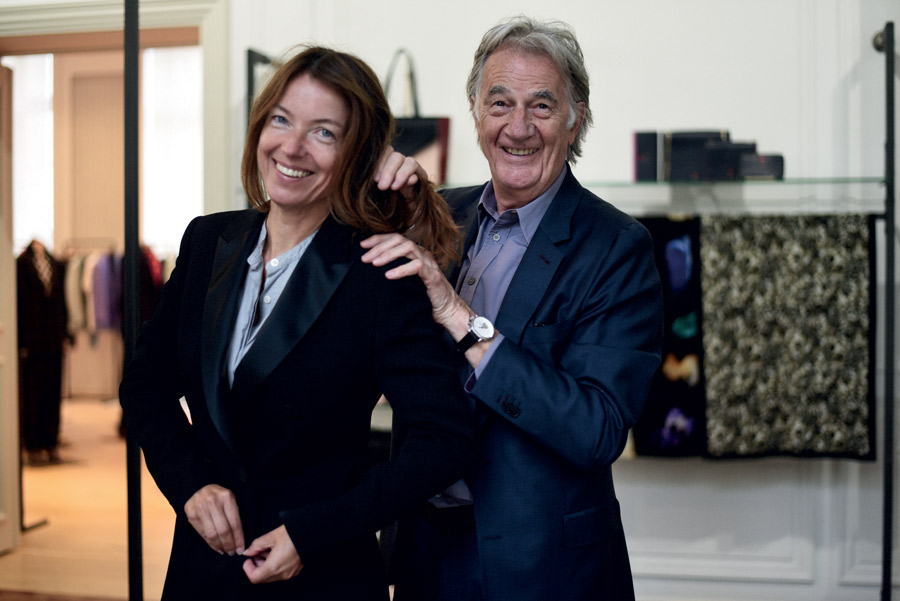
Paul Smith – wool tuxedo
***
Photos by Elise Toidé.







